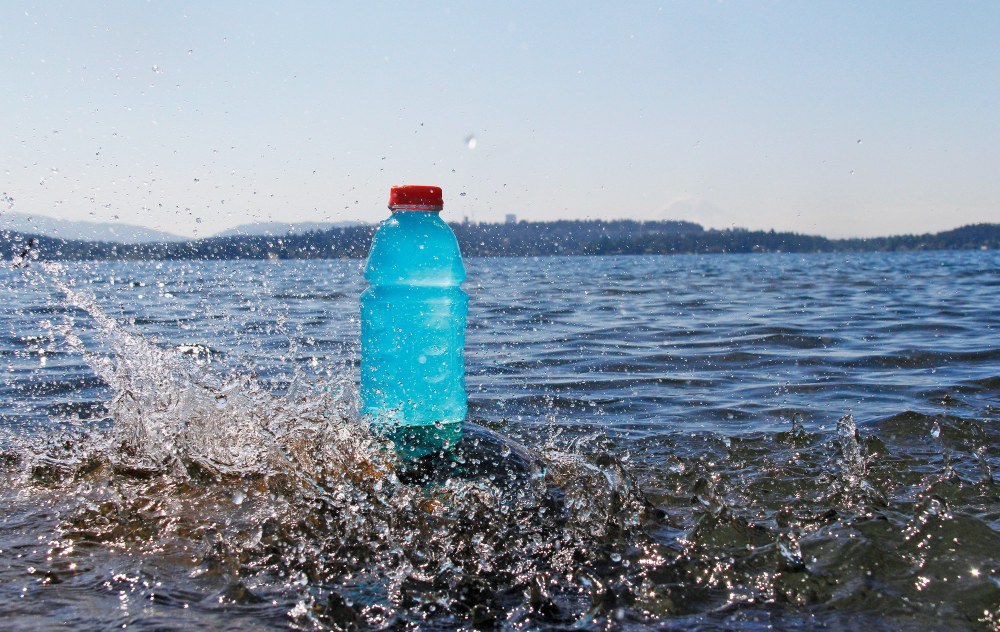
In the outdoors, many factors are out of our control. We’re often at the whim of Mother Nature and to some extent, that’s the thrill of being outside. While a certain level of risk will always exist, there are variables within our control too, and it’s our job to identify and mitigate them. Hydration - the act of replenishing vital bodily fluids - is no exception.
The benefits of adequate hydration come as no surprise. A hydrated body regulates temperature, cushions our joints, experiences proper muscle function, absorbs oxygen, and more. We should all strive for that perfectly pale-yellow pee that assures we are indeed hydrated. Typically, we can achieve peak hydration through water and water-rich foods (like fruit). But what about when we’re outside, in the heat of the day, sweating through our UPF 50 sun shirt? In short… we must adapt our intake.
The science of sweat
When we recreate outside, we sweat. We do this for many reasons, but mostly to regulate body temperature. Through sweat, we release unwanted bacteria, toxins, and chemicals from our body. On the flip side, we also release water and crucial electrolytes, such as potassium, calcium, magnesium, and - most critically - sodium. If our electrolytes fall out of balance, we risk fatigue, headaches, nausea, muscle cramps, confusion, irritability, changes in blood pressure, and more. Just like water, electrolytes are a key element in performance, injury prevention, and recovery, especially outside. To avoid dehydration and electrolyte imbalances, it’s important to evaluate what we put in our water bottles and hydration bladders.
Determining our fluid-electrolyte balance
The amount of sweat lost in an activity will determine how we replenish our fluids and electrolytes. Considerations affecting sweat loss include: length and intensity of exercise, climate, altitude, current fitness, body size, and personal proneness to sweating (heavy sweaters should supplement more than light sweaters).
Generally, 4-6oz of liquid should be consumed every 15 minutes during activity. For prolonged activities over 90 minutes - or for short, intense periods of activity - the liquid we consume should be supplemented with electrolytes, particularly sodium. While sodium intake is largely dependent on the considerations shared above, the general recommendation is to supplement 500mg of sodium per hour for endurance activities (over 90 minutes).
By supplementing with proper fluid and electrolytes during periods of activity, we mitigate the risk of dehydration, ensuring we can optimally perform, recover, and enjoy our favorite activities.
Practical lessons in hydration
- Pick your product. A variety of hydration products are available, ranging from sports drinks to electrolyte powders to gels and even gummies. Pick a product that aligns with your hydration goals and finances, so you are always prepared to supplement electrolytes.
- Evaluate your strategy. When practicing your hydration method, pay attention to how your current intake or certain products make you feel, and adjust accordingly for future activities.
- Before, during, and after. Hydration is not only important during activity. Peak hydration is achieved when adequate fluid and electrolytes are consumed before, during, and after periods of activity.
- Stay salty. Fun fact: 1⁄4 teaspoon of table salt contains roughly 575mg of sodium!
- DIY hydration. Make your own electrolyte drink at home by combining 3/4 cup of fresh citrus juice, 2 cups of water, 1/4 teaspoon of salt, and (optional) 2 tablespoons of maple syrup.
- Pack your Ten Essentials. When packing for your trip, be sure to bring extra water and electrolytes.
This article originally appeared in our fall 2024 issue of Mountaineer magazine. To view the original article in magazine form and read more stories from our publication, visit our magazine archive.
 Bayley Stejer
Bayley Stejer